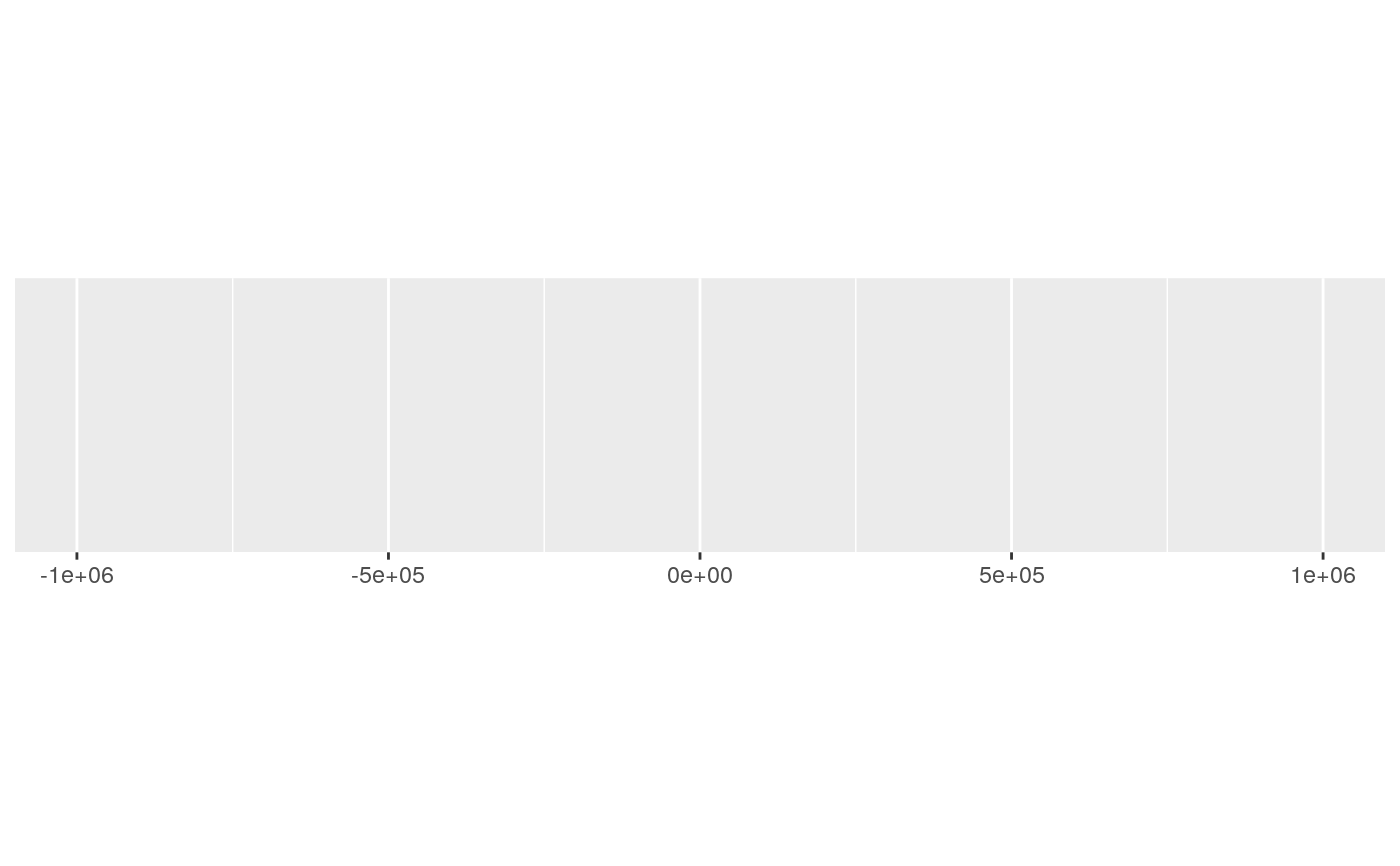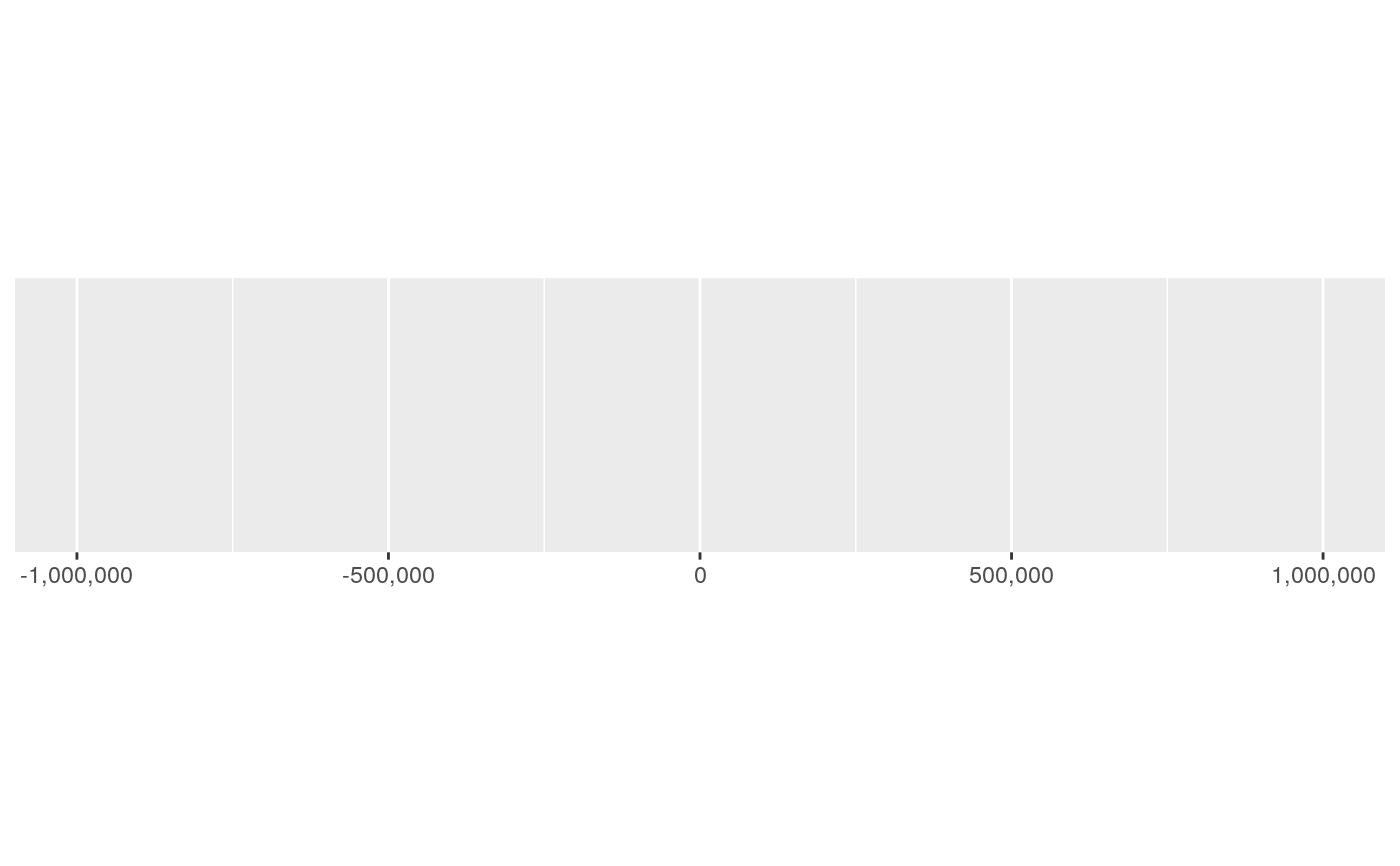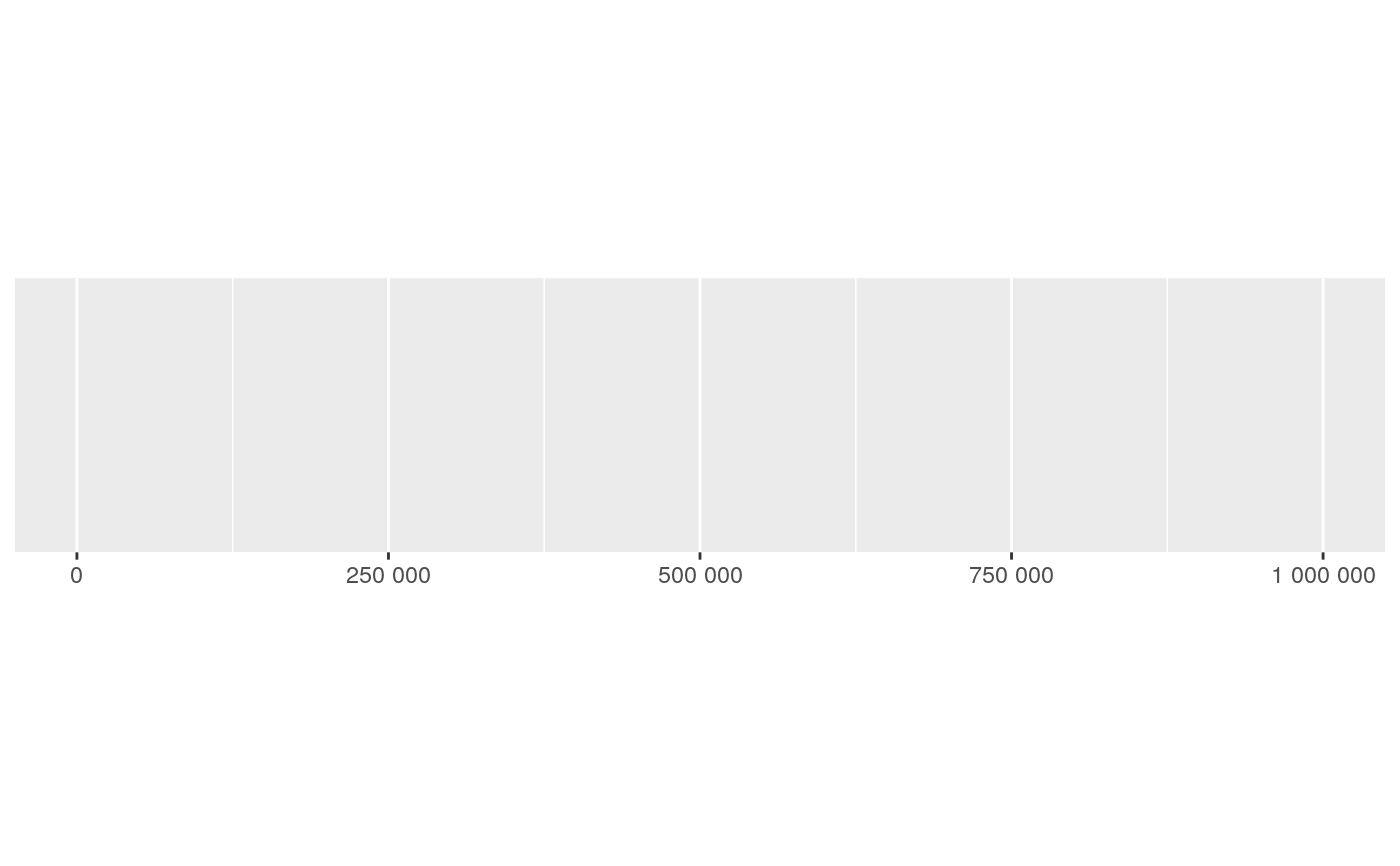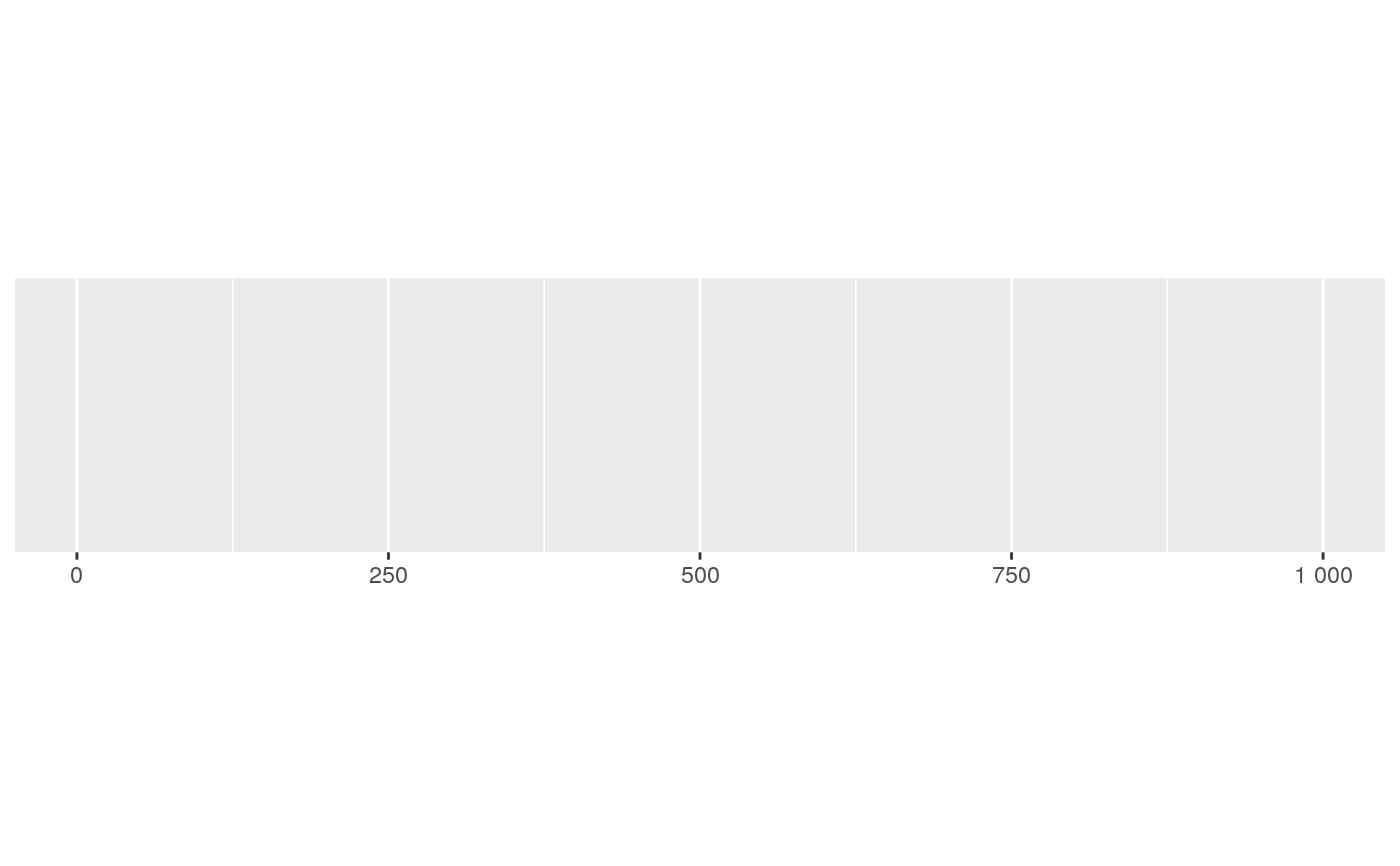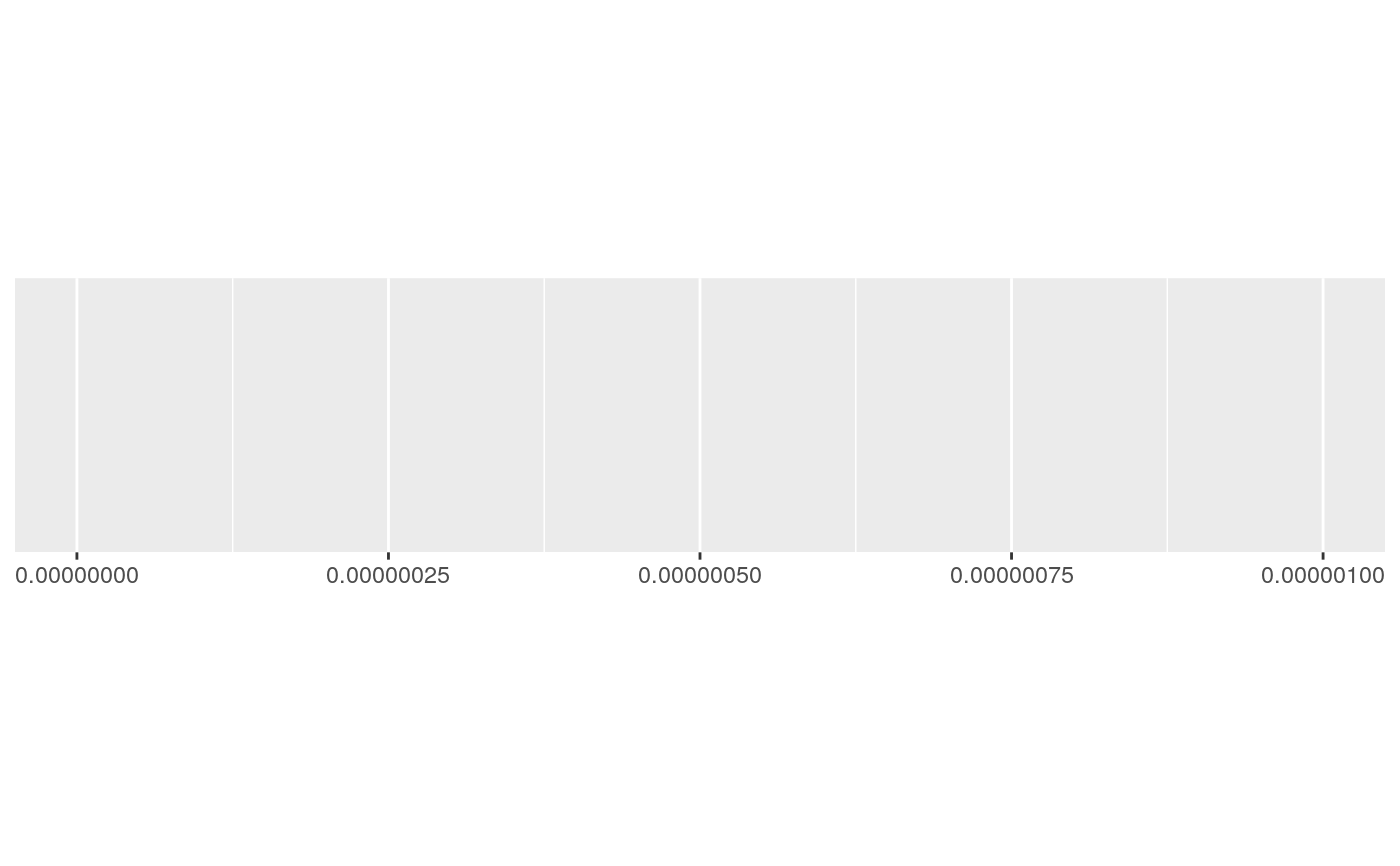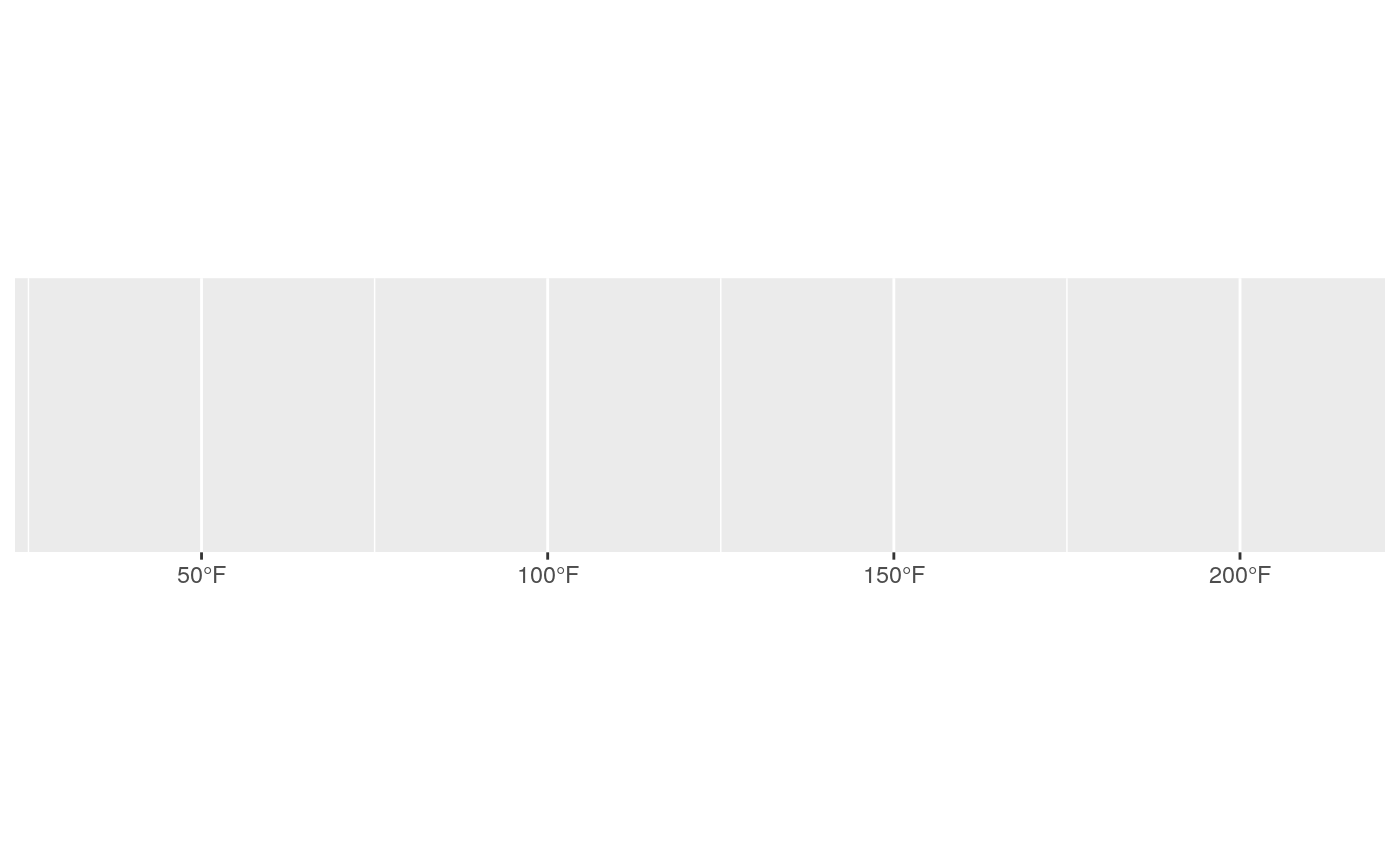Use label_number() force decimal display of numbers (i.e. don't use
scientific notation). label_comma() is a special case
that inserts a comma every three digits.
label_number( accuracy = NULL, scale = 1, prefix = "", suffix = "", big.mark = " ", decimal.mark = ".", trim = TRUE, ... ) label_comma( accuracy = NULL, scale = 1, prefix = "", suffix = "", big.mark = ",", decimal.mark = ".", trim = TRUE, digits, ... ) comma( x, accuracy = NULL, scale = 1, prefix = "", suffix = "", big.mark = ",", decimal.mark = ".", trim = TRUE, digits, ... ) number_format( accuracy = NULL, scale = 1, prefix = "", suffix = "", big.mark = " ", decimal.mark = ".", trim = TRUE, ... ) comma_format( accuracy = NULL, scale = 1, prefix = "", suffix = "", big.mark = ",", decimal.mark = ".", trim = TRUE, digits, ... )
Arguments
| accuracy | A number to round to. Use (e.g.) Applied to rescaled data. |
|---|---|
| scale | A scaling factor: |
| prefix, suffix | Symbols to display before and after value. |
| big.mark | Character used between every 3 digits to separate thousands. |
| decimal.mark | The character to be used to indicate the numeric decimal point. |
| trim | Logical, if |
| ... | Other arguments passed on to |
| digits | Deprecated, use |
| x | A numeric vector to format. |
Value
All label_() functions return a "labelling" function, i.e. a function that
takes a vector x and returns a character vector of length(x) giving a
label for each input value.
Labelling functions are designed to be used with the labels argument of
ggplot2 scales. The examples demonstrate their use with x scales, but
they work similarly for all scales, including those that generate legends
rather than axes.
Old interface
number_format(), comma_format(), and comma() are retired; please use
label_number() and label_comma() instead.
Examples
#> scale_x_continuous()#> scale_x_continuous(labels = label_number())#> scale_x_continuous(labels = label_comma())# Use scale to rescale very small or large numbers to generate # more readable labels demo_continuous(c(0, 1e6), labels = label_number())#> scale_x_continuous(labels = label_number())#> scale_x_continuous(labels = label_number(scale = 1/1000))#> scale_x_continuous(labels = label_number())#> scale_x_continuous(labels = label_number(scale = 1e+06))# You can use prefix and suffix for other types of display demo_continuous(c(32, 212), label = label_number(suffix = "\u00b0F"))#> scale_x_continuous(label = label_number(suffix = "°F"))#> scale_x_continuous(label = label_number(suffix = "°C"))
